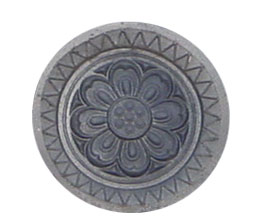|
||
 |
||
Each leaf sprout is centered against the background of a large petal which, in most examples, tapers to a point at the top. In some cases, the petals curl slightly inward. One example has a reconstructed diameter of 16cm. It was unearthed at the Yamadadera Rc site in Nara and is dated from the mid-7c. The rim of many of the tiles was made with a pattern of concentric circles. The proportions of the central seed pod, seed leaves and petals vary from temple to temple. An unusual example also excavated from Yamadadera has finely incised lines, like narrow tongues of flame, Kaenmontsuki tanben rengemon ΞΆtPΩ@ΨΆ around the seed leaves.
During the 7c, roof tile tanben rengemon patterns were not only influenced by the Paekche kingdom (Jp: *Kudara SΟ) but also by the Koguryou (Jp: *Koukuri εν) in Korea.

@
(C)2001 Japanese Architecture and Art Net Users System.@No reproduction or republication without written permission.
fΪΜeLXgEΚ^ECXgΘΗASΔΜRecΜ³f‘»E]ΪπΦΆά·B

